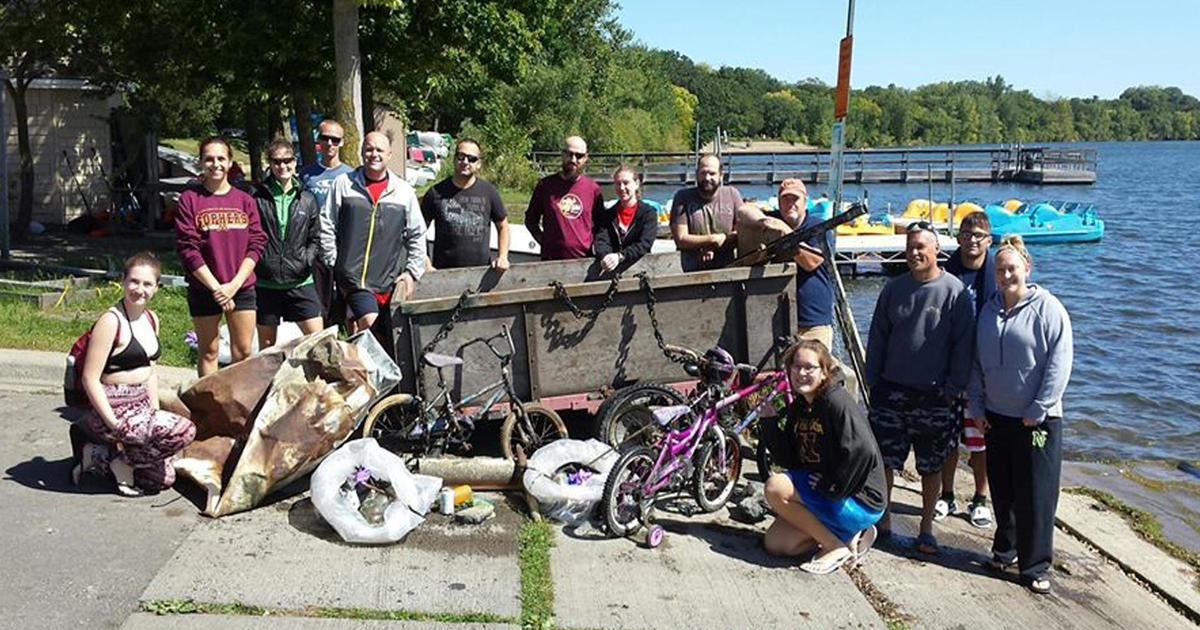What Are The Hidden Dangers Of Swimming In Open Water?
MOUND, Minn. (WCCO) -- Halfway through June and already there's been a dozen drownings across the Twin Cities, nine in Hennepin County alone.
Many happened in lakes, ponds, and rivers.
To help families stay safe, we wanted to know: What are the hidden dangers of swimming in open water? And how can you survive when things go wrong? Good Question.
The shallow end at Surfside beach doesn't automatically mean the safe end for parents Nicole Aul and Sadie Bow.
"They're fully suited in their life jacket, coast guard approved," Aul said of her two kids.
"They know that they need to put [life jackets] on before even going near the water," added Bow.
That concern is only heightened when it's open water.
"W wake comes by that you're not expecting, it comes over the top of your head, then you swallow water, you get discombobulated," said Aul.
According to Safe Kids Worldwide, a nonprofit focused on keeping kids safe from injuries, more children and teenagers drown in open water than pools.
While an inability to swim is often a factor, lakes and rivers also carry hidden dangers.
"Swimming in a lake, you don't' know where the drop offs are," said Sgt. Bret Cline of the Hennepin County Water Patrol.
Depth can be hard to gauge for several reasons. Murky water can make it difficult to see the bottom and drop offs occur suddenly. When you're finally able to stand in the water, the bottom might not be solid.
"Usually the mucky and sandy bottoms can kind of hold you down and suck you in," Cline said. "You won't be able to raise your legs, it just kind of suction cups you down."
That's what a mother felt as she tried to save your children struggling in Moore Lake earlier this month.
"I got off my raft and went under the water the sand sunk under my feet," she told WCCO. Her husband, LeLand Morris, drowned during the rescue attempt.
"That person that's struggling in the water that you're trying to help will grab onto you, they'll fight with you, they'll kick with you. And they will pull you under," Cline said.
It's why they teach this motto: Reach, Throw, and Go.
Reach means to extend a pole or rope for the person to grab. Throw means to throw something that floats into the water like a buoy, life jacket, or even a floatable cooler. Go, as in jumping into the water to help, is the last resort.
What happens when you jump into a lake not realizing the temperature is colder than expected?
"Your muscles tighten up, sort of takes your breath away," said Aul.
The shock is blood vessels constricting, said Cline, and it can impact even experienced swimmers.
"Causes you to gasp, gasp for air, you can suck in a lot of water in a quick amount of time and it's all over, you go down," he said.
Experts say people must be cognizant of and even dress for the water temperature, not just the air temperature.
Rivers can appear calm but things change quickly beneath the surface.
"Once you get past your knees there's an undercurrent and it'll sweep you under," said Cline.
There are also currents that swirl near the shores in addition to the current running along the center.
Why can vegetation in open water be of concern?
"Vegetation kind of will suck you in, it'll tangle in your legs," said Cline.
Rather than frantically kick your way out of weeds, experts suggest staying calm to slowly untangle yourself. Panicking can lead to over exertion, meaning you'll get tired quickly and could go under.
For more tips on open water safety, click here.
To learn more about the prevalence of drowning in open water, click here.




